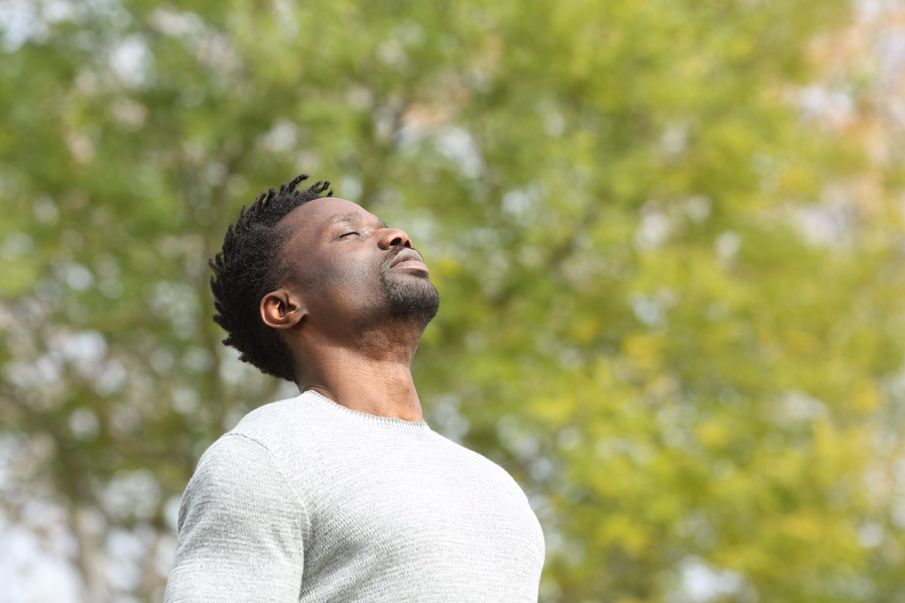Practical ways to calm your breath to ease stress and anxiety right now
Stress is a normal part of our lives. The way we’re built as humans means that certain events and situations can trigger our stress response system, creating internal panic and alarming our body of danger.
But, although stress is a natural, human response, if experienced regularly, this fight or flight mechanism can play havoc with our wellbeing. The physical symptoms of stress include rapid inhalation, high blood pressure and increased heart rate.
One often underestimated tool to ease these symptoms is harnessing the power of the breath. In fact, deep breathing is one of the best ways to lower your stress levels, as the process sends messages to your brain to calm down and recentre.
There are lots of breathing techniques that will help you relax, many of which are taught in education environments to help students prepare for exams and stressful situations. Therefore, we’ve enlisted the help of Richard Evans, education expert at The Profs to share five tried and tested breathing techniques that can help you manage stress.
1. Lion’s breath
This technique stretches the muscles in your face and relieves any tension. It’s a fun way to ease the mind through energetic breathing.
- Position yourself into a comfortable seated position to begin.
- Press your palms against your knees and spread your fingers wide.
- Inhale deeply through your nose and open your eyes wide. During this time open your mouth wide and bring the tip of your tongue towards your chin.
- As you exhale out, make a long ‘ha’ sound.
- Repeat this two to three times.
2. Equal breathing
This style of breathing is great for restoring focus and calming your nervous systems. The equal aspect helps you to create rhythm and harmony, which brings your mind to the present moment.
- Position yourself into a comfortable seated position to begin.
- Breathe in and out through your nose. During inhalation and exhalation, count to make sure your breaths are equal in duration.
- Continue this for at least five minutes.
3. 4-7-6 breath
This common technique helps to instantly relieve stress. It was developed to reduce any signs of nervousness, stress and even help you to get a good night’s sleep.
- For best results, sit or stand with a straight back to allow your lungs to expand.
- With your mouth closed, press your tongue gently on the roof of your mouth, breathe in slowly through your nose for four seconds.
- Hold your breath for seven seconds.
- Audibly exhale ‘woosh’ for eight seconds, keeping your tongue pressed in the roof of your mouth.
- Repeat for four full cycles.
4. Box breathing
This technique can be done at any time during the day or night. The short yet concise breathing helps to take your mind away from distracting thoughts.
- Sit upright in a comfortable position.
- Breathe in for four seconds, hold in for four and breathe out for four.
- Repeat this for four minutes or until you feel calm.
5. Alternate nostril breathing
This technique is common in reducing high levels of anxiety and stress. It’s a common part of yoga and allows your brain to reach a state of relaxation.
- Sit in a comfortable position either on the floor or chair. Ensure you’ve breathed out fully before beginning.
- Close the right nostril with the thumb of one hand and breathe in through the left nostril.
- Close the left nostril with one finger and release the thumb.
- Breathe out and in through the right nostril.
- Close the right nostril with the thumb and release your finger before breathing out through the left nostril.
How do breathing techniques work?
According to counsellor Andrew Keefe, it’s all to do with two areas of the nervous system; the sympathetic nervous system (SNS) and the parasympathetic nervous system (PNS).
“If we feel anxious or worried, it's often because we sense something bad or scary is about to happen. This is because the amygdala, the brain’s alarm system, has detected what it deems to be a threat or risk to our safety, and is getting the body ready to respond.
“Messages in the form of stress hormones are sent to the heart to get it to beat faster, to the lungs to take in and distribute more oxygen, and to the muscles to get them ready for action. These signals run along the SNS - the part of the nervous system responsible for getting the body ready for exertion.
“The PNS, by contrast, is responsible for calming the brain and body down, and it is engaged by long, slow, deep breathing. Slowing your breathing down will slow down your heart rate, and the heart is connected via the vagal nerve with the non-verbal area of the brain, which houses the alarm system, the amygdala.”
Breathing exercises not only help you to restore peace to your body, but they also allow you to practise mindfulness - living in and appreciating the present moment.
As the world around us continues to adapt and change, we will likely come up against new challenges in the coming months. But, by learning small practices like these breathing techniques to help us manage stress and calm our breath, we’re arming ourselves with a toolkit to help us prioritise our wellbeing in the face of adversity.
But, if you’re struggling to achieve a calmer state of mind and are looking for longer-term support, speaking to a therapist can help.


Comments